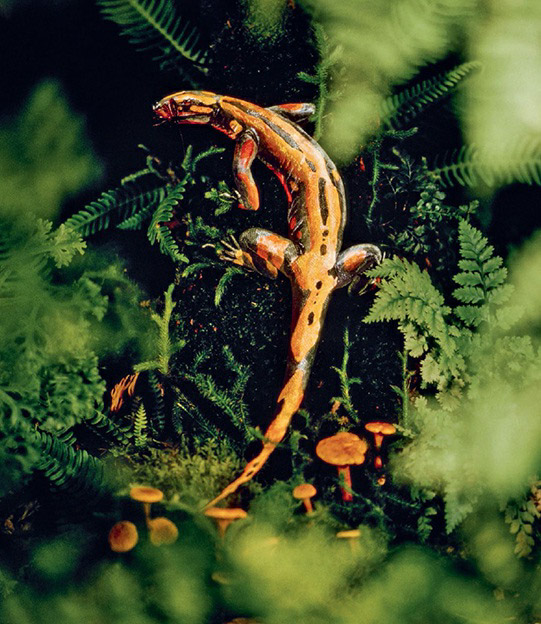Around 375 million years ago, a significant evolutionary shift occurred with the emergence of animals capable of living on dry land, at least temporarily. This led to the development of specialized sub-species of amphibious tetrapod vertebrates, adapting to new niches for food and safety. Reptiles were among the first classes to evolve in this new environment. Unlike their amphibian ancestors, reptiles had the evolutionary advantage of laying soft-shelled amniotic eggs on dry land, freeing them from the necessity of returning to water for reproduction.
One of the earliest and most distinct reptiles identified through fossil records is Hylonomus, a small, lizard-like vertebrate from the Pennsylvanian geologic period, approximately 320 to 300 million years ago. Hylonomus, measuring about 8-10 inches (20-25 centimeters) in length, primarily fed on insects and thrived in the forested coastal woodlands.
Living permanently on land offered both opportunities and challenges to these early reptiles. Initially, they faced few predators on land, but as their population increased, they began to compete and evolve into predators of each other. A significant challenge for these cold-blooded creatures was adapting to the fluctuating temperatures and environmental conditions on land, which was starkly different from aquatic environments.
Despite these obstacles, reptiles successfully adapted and evolved, eventually becoming some of the largest animals to roam the Earth. The evolutionary lineage of these early reptiles, such as Hylonomus, gave rise to a diverse array of species including ornithischian (bird-hipped) and saurischian (lizard-hipped) dinosaurs, turtles, tortoises, crocodiles, alligators, snakes, lizards, and even birds. While tens of thousands of reptilian species exist today, many have gone extinct due to natural selection and catastrophic events like meteorite impacts and volcanic eruptions. The evolutionary story of reptiles is a testament to their resilience and adaptability, significantly shaping the biological history of our planet.

